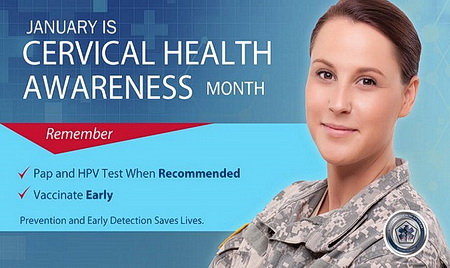 Photo by maya2008 – yayimages.com
Photo by maya2008 – yayimages.com
Cancer is defined as an abnormal distribution of cells in the body. The advent of these cells disseminating on to tissues is what causes cancer and its cells spread through the blood and lymph systems of the body.
In total, there are more than 100 different types of cancers, each named after the organs or tissues it affects. Common examples include lung cancer, testicular cancer, breast cancer and pancreatic cancer to name a few.
Esophageal Cancer
Another type is called esophageal cancer. As the name implies, it transpires in the esophagus, which is a protracted and arched tube that extends from the throat on to the stomach and as such, makes it part of the body’s digestive (gastrointestinal) system.
The central function of the esophagus is to carry food once it is swallowed to the stomach where the process of digestion takes place. Cancer occurs in the malignant cells that are found inside the esophagus. Esophageal cancer is the sixth most common reason for cancer deaths worldwide.
Symptoms
One of the primary indications of potential esophageal cancer is that patients may have trouble swallowing. They may get the feeling that food is stuck in their throat or along the esophagus. They may also experience choking in some cases.
Also called dysphagia, the sensation begins with mild discomfort and may worsen gradually if the cancer is proliferating. Naturally, the cancer narrows the passage, which is why the function of swallowing becomes difficult.
Although patients may alter their diet or take smaller bites, it makes no difference to the cancer. The larger the cancer becomes, the greater their predicament. The body reacts to the glitch by creating excess saliva but that is only a short-term solution.
If you observe, all the symptoms of esophageal cancer are connected. The esophagus is a passage that carries food, which means areas that are involved are also subject to pain. One of these is the patient’s chest. They may struggle with a burning sensation or extra pressure in their chest. This is because the cancer grows which means the food that is carried by the esophagus will encounter the tumor on its path. The friction is what incites the pain.
If a person loses weight without making a cogent effort to do so, it usually means there is an issue at play. In some cases, it could mean that they have malignant cells in their body, which are introducing a cancer. Nearly half the patients who have esophageal cancer shed considerable weight. The inability to ingest or consume adequate meals is why they become weaker. The cancer compels the body to encourage a diminished appetite and heightened metabolism rate.
Although scientists have been unable to determine the root cause of esophageal cancer, it is common knowledge that there are determinants involved that increase the risk of developing this type of cancer. With that said, there has been positive strides to pin down where this type of cancer originates from. Various trials and tests have demonstrated that factors such as drinking alcoholic beverages and smoking cigarettes are two habits that can provoke traits of esophageal cancer. When individuals consume either of the above, they can damage their DNA (Deoxyribonucleic acid) in the process. The DNA is attached to their cells, which in this case are on the inside of the esophagus.
DNA is the chemical compound in the cells that constitutes the genes of a person. Genes are instructions for how the cells in the body function. This is basically the reason why a child resembles either parent since the latter are the source of the DNA. Science has deduced that genes are not responsible for esophageal cancer and genes do not increase the risk of developing this type of cancer.
Risks
The possibility of esophageal cancer increases as an individual grows older. Roughly 85% of patients are 55 or older. There is also a gender imbalance as men are more likely to develop this disease compared to women.
Gastroesophageal Reflux Disease
Gastroesophageal Reflux Diseases (GERD) or reflux is when acid escapes the stomach and finds its way on to the esophagus. Conventionally, the stomach creates certain acids and enzymes that assists in the process of digestion. This negative reaction can incite heartburn and aches in the middle of the chest. However, most people with GERD do not go on to develop esophageal cancer.
Barrett’s Esophagus
Another condition that is considered a precursor to esophageal cancer is known as Barrett’s esophagus. If acids continue to enter the lower section of the throat, then the linings of the esophagus can be permanently impaired. The squamous cells, which are usually found in this part of the body are then replaced with gland cells.
Prolonged periods of reflux cause Barrett’s esophagus. With the passage of time, these gland cells can deteriorate. This condition is called dysplasia, which is the stage before cancer. The cells appear abnormal when seen through a microscopic. When the damage is severe, then those patients are at greater risk of developing esophageal cancer.
Obesity
Obesity, which is the state of being corpulent to an extent that it impacts a person’s health and wellbeing is a common trait that can lead to various diseases. Overweight individuals can develop adenocarcinoma in their esophagus.
The consumption of certain foods can also expedite esophageal cancer in people. It is suggested that an unhealthy diet comprised of processed foods and meats increases the chances of cancer. On the other hand, a diet rich in fibers has the opposite effect.
Plummer Vinson Syndrome
Last but not the least, Plummer Vinson syndrome is another cause of esophageal cancer. Also called Paterson Kelly syndrome, it is a rare affliction where webs develop in the upper portion of the esophagus.
A low red blood cell count i.e. anemia also accompanies this syndrome. This ailment can transpire owing to diminished iron levels, glossitis or large thyroid glands. One in ten patients with this syndrome eventually develops squamous cancer cells in their hypopharynx.
Bottom line: Stay away from cigarettes. Avoid alcohol consumption. Eat healthy foods and exercise. This not only helps avoid esophageal cancer but also helps avoid a whole list of diseases that humans can be subjected to.







 There is no one effective formula that can help in reducing weight quickly. Individuals have to take a number of measures to avoid accumulation of excess body fat. For many, a healthy diet plan coupled with aerobic exercise is the most effective way to combat obesity.
There is no one effective formula that can help in reducing weight quickly. Individuals have to take a number of measures to avoid accumulation of excess body fat. For many, a healthy diet plan coupled with aerobic exercise is the most effective way to combat obesity. 


![A DNA adduct (at center) of benzo[a]pyrene, the major mutagen in tobacco smoke](http://howard-fensterman-charities.com/wp-content/uploads/2016/08/CC-G-Wikimedia-040819a-650px-Benzopyrene_DNA_adduct_1JDG.png)


